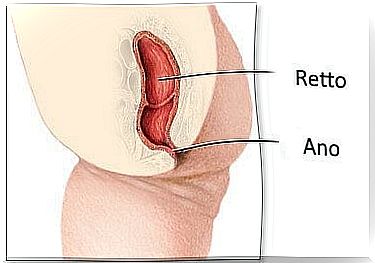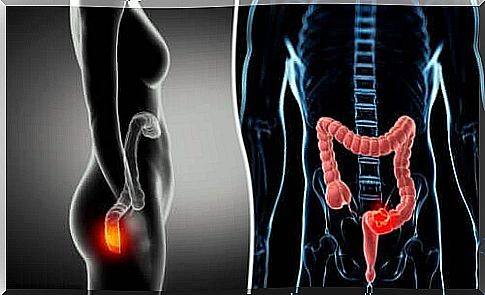Anoscopy: What Is It And When Is It Indicated?

Anoscopy is one of the techniques used to inspect the inside of the anus, the anal canal and the end of the rectum (last part of the large intestine). It therefore allows the specialist to evaluate the final tract of the digestive system.
The instrument needed to perform this examination is the anoscope, a thin, flexible tube that is inserted into the anus. It is usually accompanied by a halogen lamp which serves to illuminate the area. It is also possible to connect a fiber optic cable to it for a better view of the rectal walls.
In some cases, the specialist may use chemicals. The area is then illuminated with a fluorescent lamp to identify any lesions. In this case, it is a high-resolution anoscopy.
Anoscopy can also serve other purposes such as performing a biopsy, placing elastic ligatures, etc. Its main function, however, remains the diagnosis of rectal cancer or other pathologies.
What does anoscopy consist of?

First, the medical team informs the patient how the technique will be performed . It is important that they report any allergies, the medications they usually take, etc. It is advisable to precede the examination with an enema or a laxative to facilitate the analysis of the rectal tract.
Once the patient has assumed the correct position, the doctor begins with a physical examination of the rectum. This allows us to evaluate the state of the sphincter. The external area of the anus is also inspected for any lesions.
After passing a cleaning solution over the area, the anoscope is introduced. Typically the exam does not require anesthesia because it does not cause pain. If a biopsy is needed, the patient may feel discomfort or experience a slight bleeding. However, these are temporary situations. The patient can usually go home without any problems.
The results of the examination are obtained immediately since it is an imaging technique. If a biopsy is performed, however, it will take a few weeks.
Anoscopy: when is it indicated?

As we have said, it is a technique that allows you to see the inside of the rectum. It is therefore prescribed when the patient has changes in this area. The most common disorders for which this type of examination is used are:
- Polyps.
- Abscesses.
- Cancer of the rectum.
- Human papilloma virus or HPV.
- Other injuries of the rectum.
- Cracks that can cause pain or even bleeding.
- Painful or bleeding hemorrhoids.
The specialist may opt for anoscopy when a rectal biopsy or elastic ligation is required as a treatment for hemorrhoids.
There are, however, some conditions for which this test is not recommended; for example during a haemorrhoidal crisis or if there is an ongoing infection.
To remember
In case of an error in the execution of the examination, the patient may experience a series of symptoms such as intense and continuous pain, bleeding, fever, chills and inflammation of the affected area. In these cases it is better to go to the doctor as soon as possible, absolutely avoiding self-medication.









